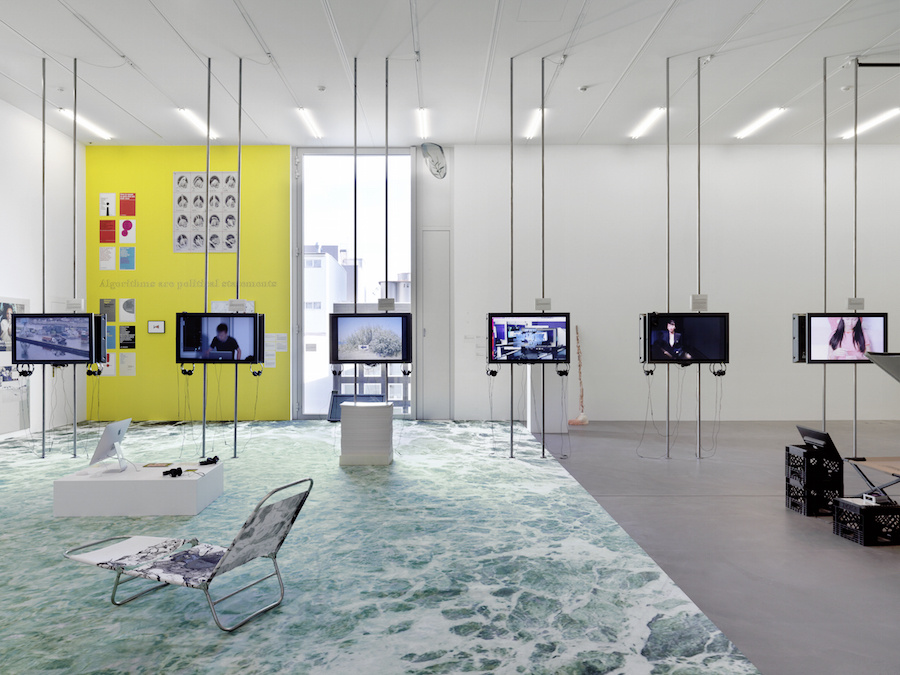Rare Photographs of Frida Kahlo Shed Light on Her Legendary Life
In the catalog introduction to “Mirror Mirror,” a collection of rare vintage photographs taken of Frida Kahlo by some of her era’s most prolific and respected photographers, the critic and psychologist Salomon Grimberg writes of the various lenses cast at the painter wherever she went. “As much, if not more, than any movie star in Mexico,” he writes, she “was photographed and her photos nurtured the limelight around her.”
- Frida Resting, 1943
The show, currently on view at Bentley Gallery in Phoenix, brings together over 20 rare photographs of the famed Mexican artist, images that taken together reveal obscure dimensions of the artist’s legendary status—and her multifaceted public profile—during her lifetime. “Mirror Mirror” is also, given Kahlo’s desirability as a subject, a catalog of the artists, photographers, and intellectuals who gathered around Kahlo during her reign as one of Mexico’s most luminary post-revolutionary figures.
The collection contains photographs both apparently candid (as in Lucienne Bloch’s coy Frida Winking, 1933) and assiduously staged. Nikolas Muray’s portrait Frida Kahlo on White Bench, New York (1939), shows the painter set in front of a carefully constructed, fantastically formal floral background—in retrospect, an image of ironic distance, given that at the time the photographer and his subject were near the midpoint of an intense, decade-long love affair. Muray, a Hungarian-American photographer and Olympic fencer, is only one of the many famed artists to shoot the iconic Kahlo during her life.
Also on display are the photographs of the aforementioned Lucienne Bloch, a muralist with close ties to both Frida Kahlo and Diego Rivera; she is thought to have captured the only visual record of Rivera’s ill-fated and controversial Rockefeller Center fresco, a mural that combatively depicted Lenin in a moment of intense political debate on the merits of American capitalism. Imogen Cunningham, a member of the California-based collective Group f/64 (which also counted Ansel Adams among its ranks) is represented through her muted, elegant black-and-white portrait, the tone of which runs refreshingly counter to today’s more bombastic portrayals of Kahlo. In a number of images, the artist is photographed near mirrors and in front of her own self-portraits, a nod to her massively famous practice of self-representation, a tendency that was as much about the creation of Kahlo’s self-image through symbolism as a display of her raw skill as an artist.
The collection contains photographs both apparently candid (as in Lucienne Bloch’s coy Frida Winking, 1933) and assiduously staged. Nikolas Muray’s portrait Frida Kahlo on White Bench, New York (1939), shows the painter set in front of a carefully constructed, fantastically formal floral background—in retrospect, an image of ironic distance, given that at the time the photographer and his subject were near the midpoint of an intense, decade-long love affair. Muray, a Hungarian-American photographer and Olympic fencer, is only one of the many famed artists to shoot the iconic Kahlo during her life.
Also on display are the photographs of the aforementioned Lucienne Bloch, a muralist with close ties to both Frida Kahlo and Diego Rivera; she is thought to have captured the only visual record of Rivera’s ill-fated and controversial Rockefeller Center fresco, a mural that combatively depicted Lenin in a moment of intense political debate on the merits of American capitalism. Imogen Cunningham, a member of the California-based collective Group f/64 (which also counted Ansel Adams among its ranks) is represented through her muted, elegant black-and-white portrait, the tone of which runs refreshingly counter to today’s more bombastic portrayals of Kahlo. In a number of images, the artist is photographed near mirrors and in front of her own self-portraits, a nod to her massively famous practice of self-representation, a tendency that was as much about the creation of Kahlo’s self-image through symbolism as a display of her raw skill as an artist.
- Frida in Front of Studio with Monkey, Coyoacan, 1946
- Frida Winking, 1933
- Frida Kahlo on White Bench, New York (2nd Edition), 1939
- Frida, Pink/Green Blouse, Coyoacon, 1938
- Frida Kahlo in Blue Blouse, 1939
- Frida Kahlo (Sitting on Roof Holding Cigarette), 1946
- Frida with Magenta Rebozo, 1939
- Frida and Diego, Mexico, 1935
- Frida (Standing by Basket), 1931
- Frida and Diego Kissing, 1933
—M. Osberg
“Mirror Mirror: Rare Photographs of Frida Kahlo” is on view at Bentley Gallery, Phoenix, Jan. 14th – Feb. 27th.
Follow Bentley Gallery on Artsy.
“Mirror Mirror: Rare Photographs of Frida Kahlo” is on view at Bentley Gallery, Phoenix, Jan. 14th – Feb. 27th.
Follow Bentley Gallery on Artsy.

















